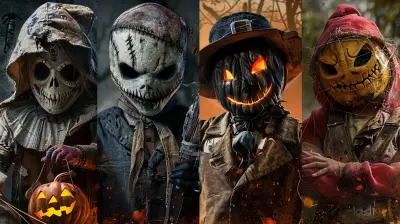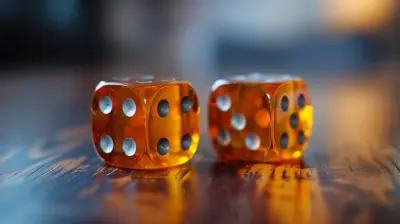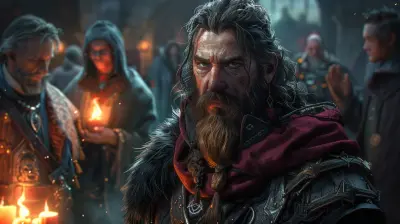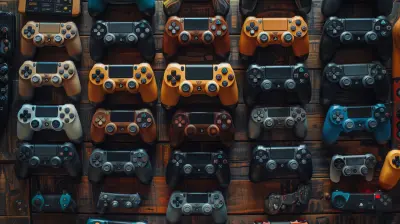The Evolution of Pixel Art in Indie Games
13 June 2025
Pixel art is a bit like comfort food for gamers. It’s nostalgic, heartwarming, and instantly takes you back to the simpler times of gaming. Yet, despite its old-school charm, pixel art is far from outdated. In fact, it’s thriving, especially in the world of indie games. Ever wondered why something so retro is still so relevant? Let’s dive into the fascinating evolution of pixel art in indie games and see how this timeless art style has not only survived but also reinvented itself for a new generation of gamers. ![]()
A Blast From the Past: The Birth of Pixel Art
Before we dissect its evolution, we need to take a trip down memory lane. Back in the ‘80s and ‘90s, pixel art wasn’t just a stylistic choice; it was a necessity. Hardware limitations meant developers had to work with small resolutions and limited color palettes, often squeezing every last pixel for storytelling and character design. Think classics like Super Mario Bros., The Legend of Zelda, or Sonic the Hedgehog.Back then, pixel art wasn’t about aesthetic. It was about functionality. Devs crafted entire worlds using chunky, square pixels, managing to create visual masterpieces despite the constraints. And let’s be honest—those pixelated sprites and blocky backdrops hold a special place in our hearts, don’t they? ![]()
The Great Decline: The Rise of 3D Graphics
As technology advanced, the gaming industry cranked up the realism. The late ‘90s and early 2000s ushered in the era of 3D graphics, and suddenly, pixel art felt... old-fashioned. Developers jumped on the 3D bandwagon, striving for realism in games. Titles like Tomb Raider and Final Fantasy VII showcased what games could look like in three dimensions, and boy, gamers were blown away.For a while, it seemed like pixel art was fading away. The industry was chasing polygons and pushing boundaries in lighting, textures, and motion capture. Who needed pixels anymore, right? ![]()
The Indie Revolution: Pixel Art Stages a Comeback
Plot twist: Pixel art wasn’t dead—it was just waiting for its big comeback. The rise of indie games in the late 2000s and 2010s gave pixel art a new lease on life. Why? A mix of necessity and nostalgia.Indie developers, with their smaller budgets and teams, found pixel art to be a practical option. It’s less resource-intensive compared to hyper-realistic 3D graphics, making it perfect for small-scale projects. But practicality isn’t the only reason for pixel art’s resurgence. Nostalgia played (and still plays) a huge role.
Games like Super Meat Boy, Celeste, and Stardew Valley embraced pixel art, and gamers loved it. These games didn’t just mimic the classics; they used pixel art to create something fresh, blending retro aesthetics with modern gameplay mechanics. It was like wearing your favorite vintage band tee but upgrading your look with new kicks. ![]()
Why Pixel Art Feels So Timeless
You may wonder, "Why does pixel art still resonate with players in a world dominated by lifelike graphics?" It’s simple: pixel art has personality.There’s something uniquely magical about the way pixel art lets your imagination fill in the gaps. A cluster of squares can represent a towering knight, a spooky forest, or an alien spaceship. It’s minimalistic but expressive, like the gaming equivalent of poetry.
Pixel art is also incredibly versatile. Whether it’s used in a fast-paced platformer or a slow-burn narrative RPG, the style adds charm and character to the story. And let’s not forget, it just looks cool. Indie developers know how to use bold color palettes, intricate animations, and tiny details to craft visually stunning experiences.
Modern Trends: How Pixel Art Has Evolved
Pixel art in indie games today isn’t just a throwback to the ‘80s. It’s evolved into an art form of its own, blending old and new styles. Here’s how developers are pushing the boundaries of pixel art in modern games:1. High-Resolution Pixel Art
Unlike vintage games, modern pixel art games can take advantage of today’s powerful hardware. This allows for higher resolutions while keeping the pixelated aesthetic intact. Games like Octopath Traveler bring stunning visual flair by combining traditional pixel art with HD textures, lighting effects, and 3D backdrops.2. Dynamic Animations
Back in the day, pixel art animations were pretty limited—think two-frame walking cycles. Today, indie devs are flexing their animation muscles. Characters in modern pixel art games move fluidly, with detailed expressions and intricate movements. Studios are proving that pixel art can be just as dynamic and expressive as hand-drawn or 3D counterparts.3. Mixing Pixel Art with Modern Tech
Some indie games experiment by blending pixel art with modern graphical techniques, like particle effects, shadows, and depth of field. Games like Hyper Light Drifter combine retro vibes with sleek neon aesthetics, resulting in a look that’s both classic and futuristic.4. Narrative Depth
Pixel art games today are telling deeper, more complex stories than ever before. Titles like Undertale have shown that simple visuals can deliver emotionally charged narratives, proving that pixel art is more than just eye candy—it’s a tool for storytelling.Why Indie Developers Keep Choosing Pixel Art
It’s not just nostalgia driving pixel art’s popularity. Indie developers love it for practical reasons too.For one, pixel art is beginner-friendly. You don’t need a massive team of 3D modelers or animators to create something beautiful. A single artist can create pixel art with passion, care, and a little bit of elbow grease.
Pixel art also offers creative freedom. Unlike 3D or photorealistic graphics, which can be limited by realism, pixel art gives developers a blank canvas for abstraction. You can design quirky, exaggerated characters or surreal landscapes that wouldn’t make sense in a hyper-realistic game.
And let’s not underestimate the power of community. Pixel art has a huge fanbase, from creators to players. There’s a shared sense of appreciation for the craftsmanship that goes into every pixel.
The Future of Pixel Art in Indie Games
So, where is pixel art headed? It’s hard to say, but one thing’s clear: it’s not going anywhere. As indie games continue to thrive, pixel art will remain a cornerstone of the industry.We’ll likely see even more innovation in blending pixel art with modern technologies. Maybe AI will help developers create even more detailed sprites. Or perhaps we’ll see pixel art games in AR or VR. And who knows? Maybe pixel art will find new ways to surprise us.
What’s certain is that pixel art isn’t just a relic of the past; it’s a living, breathing art form that continues to inspire players and developers alike.
Conclusion
Pixel art has come a long way. From a technical necessity in the early days of gaming to an intentional art style beloved by indie developers, it has stood the test of time. Whether it’s the nostalgia it evokes, its simplicity, or its ability to tell stories in a uniquely expressive way, pixel art has carved out a permanent place in the gaming world.Next time you play a pixel art game, take a moment to appreciate just how far those tiny squares have come. They’re not just pixels; they’re pieces of gaming history, reimagined for today’s world.
all images in this post were generated using AI tools
Category:
Indie GamesAuthor:

Emery Larsen
Discussion
rate this article
3 comments
Eden Rodriguez
Pixel art beautifully captures nostalgia while evolving with creativity. Excited to see how indie developers will continue to innovate this style!
June 19, 2025 at 3:35 AM

Emery Larsen
Thank you! It's inspiring to see how pixel art continues to blend nostalgia with innovation in the indie scene. Exciting times ahead!
Zyana Rhodes
The article insightfully traces pixel art's journey, highlighting its resurgence in indie games, blending nostalgia with modern creativity, enhancing visual storytelling.
June 17, 2025 at 5:02 AM

Emery Larsen
Thank you for your thoughtful comment! I'm glad you found the article insightful and appreciate the blend of nostalgia and modern creativity in pixel art.
Esther Wood
This article beautifully captures the essence of pixel art's evolution in indie games. It’s incredible how these vibrant visuals evoke nostalgia while pushing creative boundaries. Thank you for celebrating the artistry and innovation that continues to inspire us all!
June 15, 2025 at 2:38 AM

Emery Larsen
Thank you for your kind words! I'm glad you enjoyed the article and appreciate the magic of pixel art in indie games.



